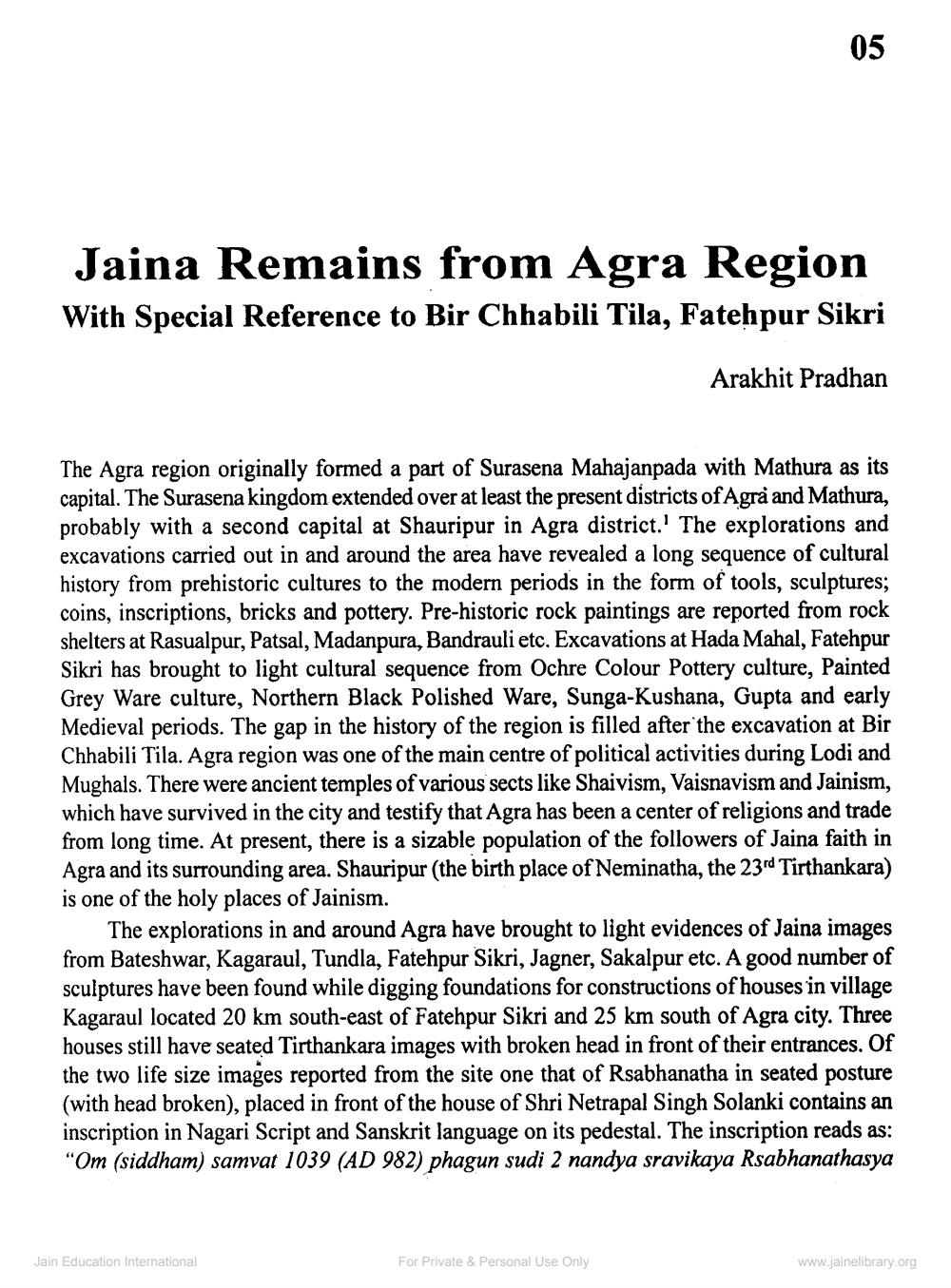________________
Jaina Remains from Agra Region With Special Reference to Bir Chhabili Tila, Fatehpur Sikri
Arakhit Pradhan
The Agra region originally formed a part of Surasena Mahajanpada with Mathura as its capital. The Surasena kingdom extended over at least the present districts of Agrå and Mathura, probably with a second capital at Shauripur in Agra district.' The explorations and excavations carried out in and around the area have revealed a long sequence of cultural history from prehistoric cultures to the modern periods in the form of tools, sculptures; coins, inscriptions, bricks and pottery. Pre-historic rock paintings are reported from rock shelters at Rasualpur, Patsal, Madanpura, Bandrauli etc. Excavations at Hada Mahal, Fatehpur Sikri has brought to light cultural sequence from Ochre Colour Pottery culture, Painted Grey Ware culture, Northern Black Polished Ware, Sunga-Kushana, Gupta and early Medieval periods. The gap in the history of the region is filled after the excavation at Bir Chhabili Tila. Agra region was one of the main centre of political activities during Lodi and Mughals. There were ancient temples of various sects like Shaivism, Vaisnavism and Jainism which have survived in the city and testify that Agra has been a center of religions and trade from long time. At present, there is a sizable population of the followers of Jaina faith in Agra and its surrounding area. Shauripur (the birth place of Neminatha, the 23rd Tirthankara) is one of the holy places of Jainism.
The explorations in and around Agra have brought to light evidences of Jaina images from Bateshwar, Kagaraul, Tundla, Fatehpur Sikri, Jagner, Sakalpur etc. A good number of sculptures have been found while digging foundations for constructions of houses in village Kagaraul located 20 km south-east of Fatehpur Sikri and 25 km south of Agra city. Three houses still have seated Tirthankara images with broken head in front of their entrances. Of the two life size images reported from the site one that of Rsabhanatha in seated posture (with head broken), placed in front of the house of Shri Netrapal Singh Solanki contains an inscription in Nagari Script and Sanskrit language on its pedestal. The inscription reads as: "Om (siddham) samvat 1039 (AD 982) phagun sudi 2 nandya sravikaya Rsabhanathasya
Jain Education International
For Private & Personal Use Only
www.jainelibrary.org




